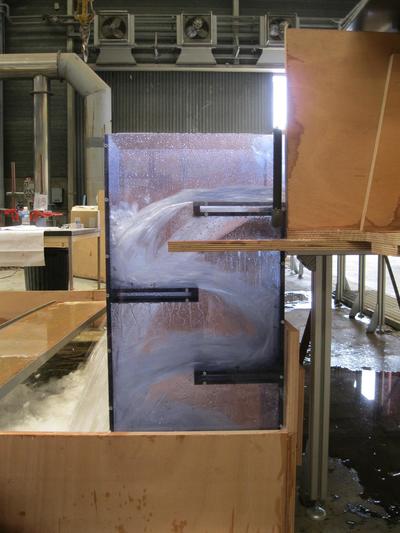
Drop structures
A key challenge in designing urban water networks is transferring fast-flowing water over large drop heights whilst maximising energy dissipation; when it comes to designing drop structures, physical modelling is widely recognised as a valuable aid.
What we do

Drop structures can sometimes be tricky to design, because they concentrate a large amount of hydraulic kinetic energy within a small space, given that many projects impose stringent spatial constraints. The purpose of these highly specific structures is to convey water at high flow rates over large differences in elevation, while keeping the flow unconfined and maximising energy dissipation in the receiving structure.
There are several different types of drop structure, with different shapes: cylindrical (also known as a “vortex drop shaft”), stepped, with a helicoidal ramp, etc. Irrespective of the configuration chosen, there are a number of inherent design risks:
- water overflowing the upstream structure
- poor management of freeboard, or even flow pressurisation
- excessive vibrations
- poorly managed dissipation at each step or in the receiving chamber
- an insufficient air supply, potentially causing pressure problems.
As is the case with many types of hydraulic structure involving significant flow velocities, strong turbulence and air entrainment, physical modelling is the essential tool for evaluating and adjusting designs of drop structures.
